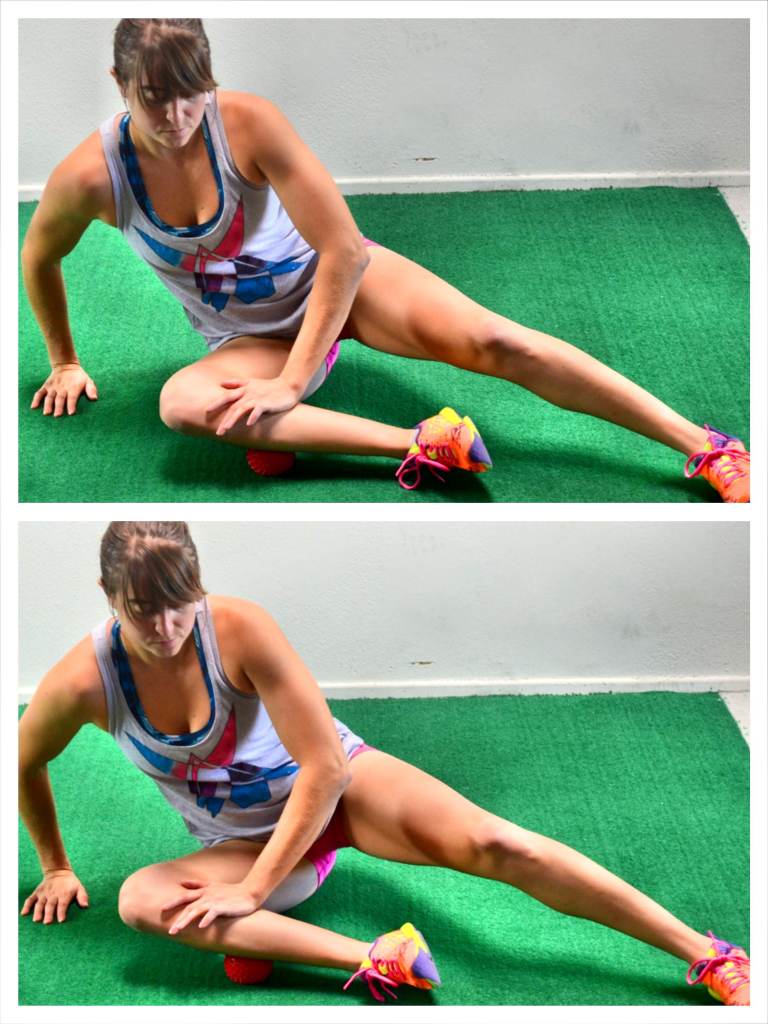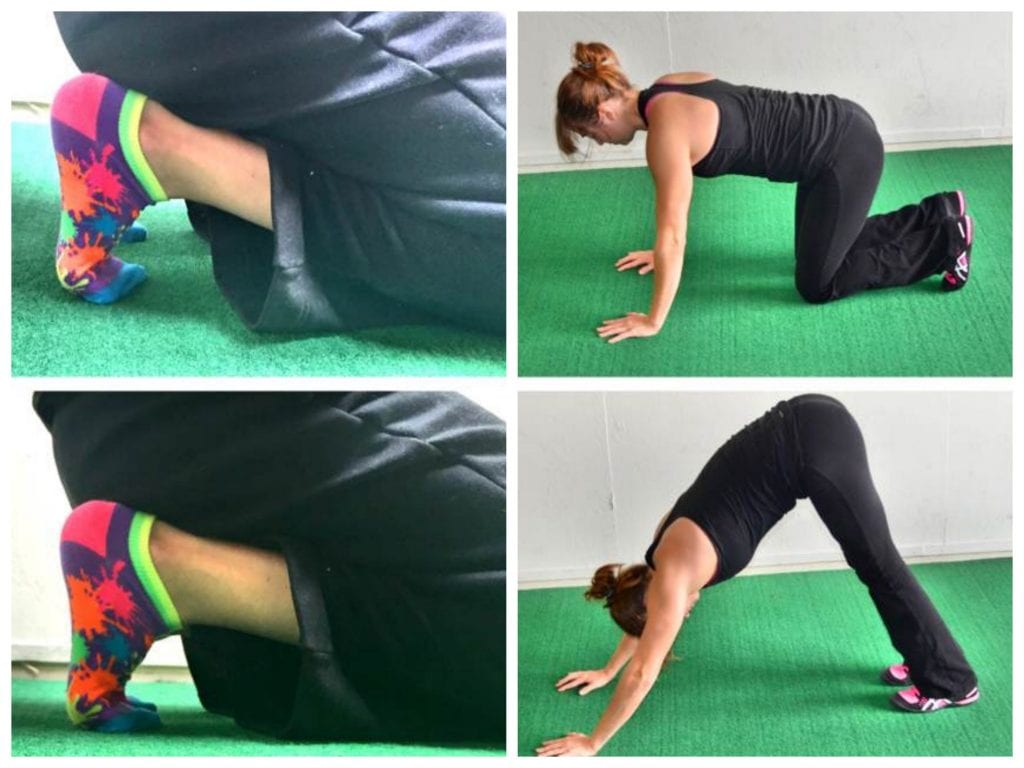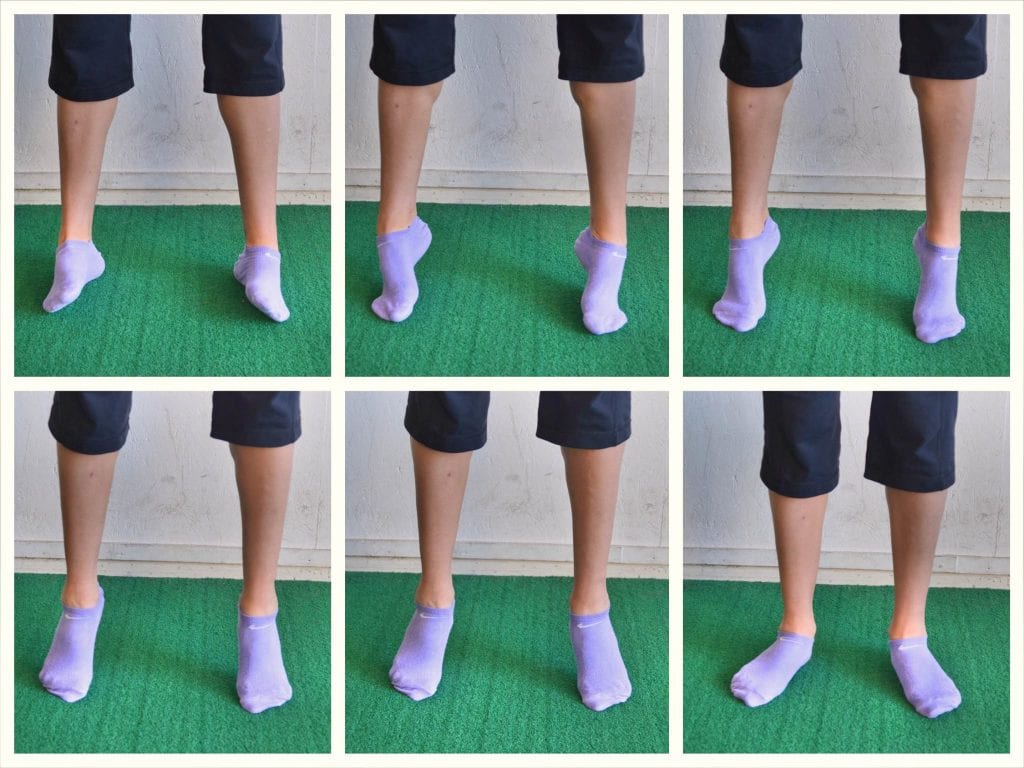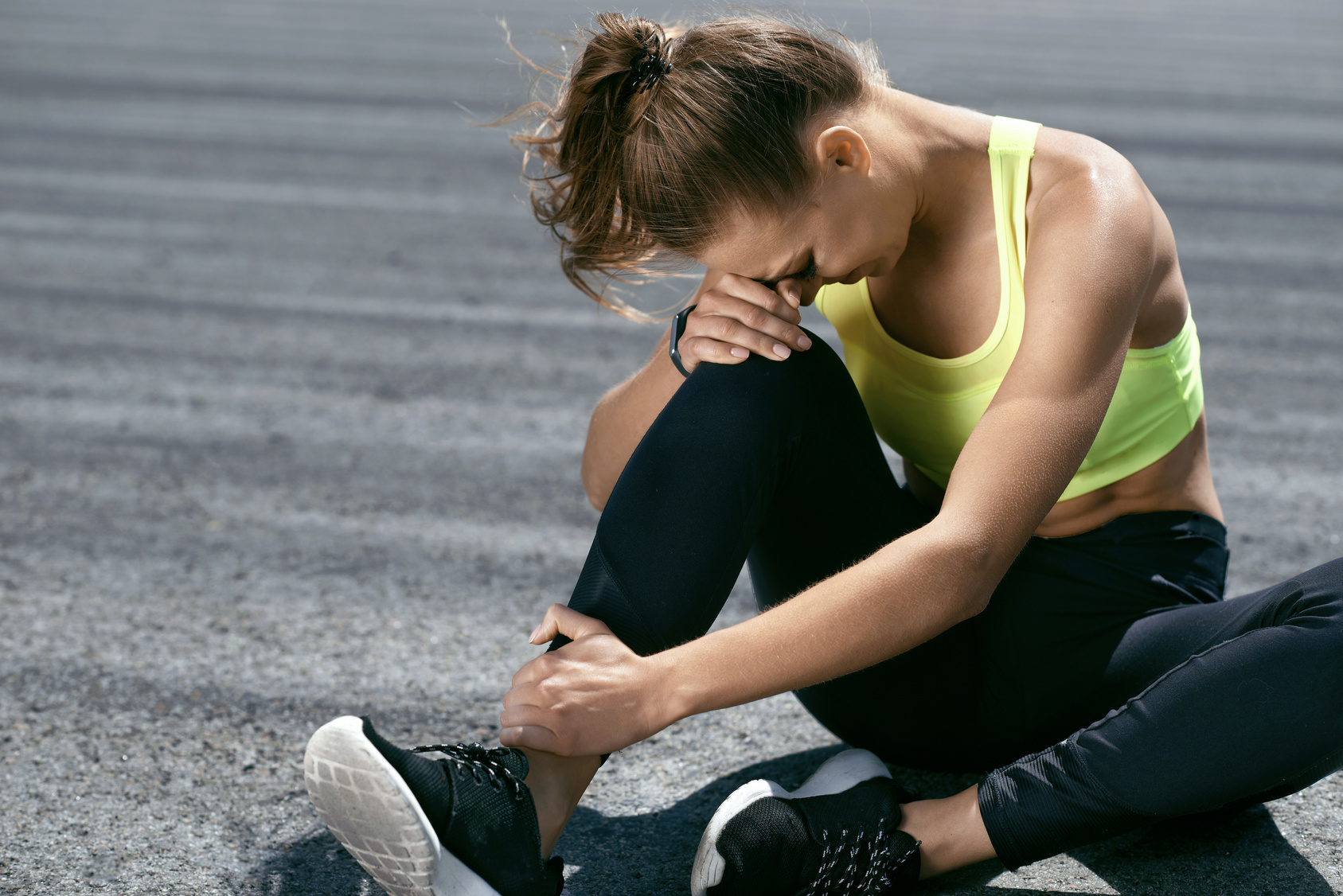Does your foundation have cracks?
If you’ve truly been doing all of the right things CONSISTENTLY for awhile, which really means more than 4 weeks at least, and results are just not adding up like they should be, you’re missing a weak link.
Very often our first focus is near the point of pain, which is a good place to start.
Especially with SI joint, hip or lower back pain.
Because underactive glutes are an all too common culprit.
But what if you’re doing hip mobility work and glute activation, and even feeling the right muscles working, BUT things just don’t seem to be “sticking.”
What’s going on?
This is when you need to start looking at compensations and imbalances up and down your body that may be creating the perpetual overload.
It also means addressing any PREVIOUS INJURIES.
And one all too common injury people tend to forget about is the ANKLE SPRAIN.
If overload is being perpetuated, even while doing the right moves with the right recruitment patterns (assessing recruitment patterns should be one of the FIRST things you do when doing the “right moves”), you need to address previous injuries you may not have considered before…
Specifically ankle injuries when it has to do with hip, knee or lower back pain and the hip mobility and glute activation work isn’t sticking.
There is a very important ankle-butt connection we often don’t recognize (and yes…this is my very highly technical term for it hehe)
Ankle injuries are too often overlooked because…
Often we FORGET about ankle injuries because how could something years ago be affecting us now!?! (People won’t mention them to their physio or trainer).
AND…Often we don’t properly REHAB the ankle injury NOR do we continue doing PREHAB for it once it’s “better.”
We return to working out like nothing happened and often things seem absolutely fine.
But what we don’t realize is that injuries create disruptions in our mind-body connection AND that, all too often even very slight movement distortions, lead to overload and imbalances.
Sometimes when I bring up previous ankle injuries to clients, they’ll even say, “Yea but I had no issues after that…Just the knee pain or hip pain years later.”
(This is where I would make a face that combines both the eye roll emoji and that emoji with the line mouth and lines for eyes.)
Ok…IF YOU HAD A PREVIOUS INJURY YOU NEVER TOOK CARE OF AND NOW HAVE INJURIES ON THE SAME SIDE, THEY ARE PROBABLY CONNECTED.
Plain and simple.
And yes…they can finally rear their freaking ugly heads YEARS, legit YEARS, later.
So you can’t ignore that ankle injury you may have even had a decade ago.
If you never worked to restore proper mobility and strength, if you never re-establish that interrupted mind-body connection, well…it’s like leaving a crack in your foundation.
Things may not fall apart instantly, but if you don’t take care of that crack, other issues will spread throughout your structure slowly until it all collapses.
While your ankle may no longer be in pain, and it may “seem” like nothing is wrong there, a lack of pain isn’t a sign of optimal functioning.
BUT it is why, all too often, we ignore these other areas.
If you’ve been ignoring your foundation, start giving it some TLC with these 3 moves to get you started.
3 Moves To Take Care Of Your Feet And Ankles
These three moves will help you start to relax commonly overactive muscles and strengthen weaker muscles to improve your foundational stability.
Peroneal Foam Rolling:
Knee, ankle and foot pain (yes this muscle can lead to flat feet even!) can all be related to this muscle. Yet it is a muscle we often ignore because…well…it isn’t exactly where the pain is!
It is an important muscle to pay attention to because if just one side becomes short and overactive, which is foam rolling is so important for this muscle, it can lead to a functional leg length discrepancy (aka you may “think” one leg is shorter when it is actually muscle tightness causing the symptoms) and a weight shift during bilateral movements.
This can perpetuate compensations and overload, leading to injuries all the way up the other side even!

To roll out your Peroneal, a ball or small roller works best although you can use a larger foam roller.
Take a ball and place it on the ground with the side of your lower leg on top. Press down on your lower leg with your hand to apply more pressure so that the ball digs in.
Then move your leg so that you roll the ball down the length of the side of your lower leg.
Hold on any tight spots and even make small circles on the ball with your lower leg to dig into any tender areas. You can also circle the ankle while holding on any tight spots.
To hit slightly different angles along the side of your shins, rock forward a bit (toward your shin) or backward (toward you calf).
Work your way up to just below your knee and then down to a few inches above the anklebone.
Kneeling Foot Stretch To Bear Squat:
This stretch can help if you’ve ever had plantar fasciitis or limited ankle mobility and Achilles issues.
What we often don’t realize is that even our BIG TOE can get “locked up.”
This stretch will work to relax and lengthen the muscles under your feet as well as work to improve your calf flexibility and ankle mobility, improving specifically your dorsiflexion (your ability to bring your toes closer to your shin).
This stretch can even help you SQUAT deeper if you’ve felt like your range of motion when squatting is limited.

To do the Kneeling Foot Stretch to Bear Squat, start kneeling on the ground with your feet flexed. Sit back on your heels. Rock side to side to stretch your feet.
Then place your hands down on the ground and press your butt up into the air, driving your heels down to the ground. Relax your calves and try to get your heels down to the ground.
Feel a nice stretch down your calves and even up into your hamstrings. Hold for 1-2 seconds and then drop back down to your knees and sit back on your heels again to stretch your feet.
Make sure that as you drive your butt up, you are pressing yourself back so that your driving your heels down. Don’t simply pike up and lower back down. Actually drive back and feel the stretch down your calves.
You can walk your hands in just a little bit closer to your knees to help you feel the stretch a little bit more, but do not walk them in too close.
Calf Raise Circles:
Calf Raise Circles can strengthen your feet and help you improve your ankle stability. Often when we do basic calf raises, we aren’t conscious of compensations we even perpetuate with them.
But by doing the circles, you are focusing on moving across your foot to engage all the muscles correctly and not just perpetuate patterns of overuse.

To do Circle Calf Raises, start standing with your feet about hip-width apart. You can face a wall or table if you need a little help balancing so that you can really focus on circling.
Then start to circle by rocking to the outside of your feet. Slowly come forward toward your pinky toe. Then come up onto your toes slowly circling from your pinky toe toward your big toe. Come up as high onto your toes/balls of your feet as you can. Then reach your big toe and circle in toward the inside of your feet as you come down.
Then come back up, this time starting with the big toe and circling out toward your pinky toe before coming down on the outsides of your feet. Repeat circling back up and in. Really feel yourself getting as big a circle as you can while feeling your calves work to help you come up onto your toes. In order to really circle, you may need to lightly keep your hand on the wall.
If you’re ready to move and feel your best and learn the prehab, strength and cardio combination right for you and your needs and goals, apply to my 1:1 Coaching.
–> Learn More



Thank you. This makes so much sense. I played basketball for years so have sprained my ankle multiple times over the years. I have always felt that this was responsible for my limitations when squatting and now also explains the general discomfort in my whole leg muscle systems.
Awesome information as always.
Thank you!
Yes! It’s so key we now take time to do the rehab and prehab to keep those ankles healthy so they don’t create compensations later. Never too late to start working on it!
Excellent help! Really appreciate this thank you. Love your posts. Thank you!
Thanks Sarah! Glad they help!
When I first “found” you, you were the only person to correctly identify that the muscle I’d pulled in my back was the psoas. It’s been a couple years (!) My knee still hurts from that, on the inside. What moves should I do for that?
Thank you.
After suffering for a year which saw me go from being extremely active to hardly being able to walk .I have just learnt my sprained ankle of 3 years ago has been the catalyst of immense pain.
Personally I think your great ?.
So informative ,clear and innovative ..
Thank you .I will definitely be doing the exercises in your blog x
Glad it helps!
Hi there. I recently sprained my ankle. It will be 2 weeks on Monday. I am having severe pain in my right butt area. Is this normal
Have you seen someone about the ankle?
Thank you for this. I had a feeling my ankle was the reason my glute/hip exercises never “stick”. Any suggestions for someone who had ankle surgery and dealing with scar tissue that effects the mobility and strength of my calf/ankle? All my back issues are on the same side as the ankle surgery. I notice I have a hard time doing one legged calf raises on that leg.
Hope you’ve gone to physio as they can often work to break up that scar tissue. Massage and foam rolling and can also help!
so i am having trouble with hamstring and glute activation, and my knee is hurting when I do certain moves. And I had a really bad ankle injury in soccer a year ago. Could that be a major reason why? And other than those moves, would dry electric needling in my glutes and hamstring help the part of reactivating those muscles?
Yes it for sure is all connected and often instability or immobility at one joint can lead to overload and recruitment pattern issues elsewhere. Are you going to physio? That is key to get assessed!
I loved coming across this article! I’ve been a certified PT for five years now, but became a specialist in functional training during quarantine. I never realized my ankle sprain from high school had been affecting my glutes!! This is filled with vital information more people should be aware of. I’m constantly reminding my clients that everything is connected! Thank you so much!
So glad it helped Rebekah!
Hi Cori,
I sprained my right ankle ten years ago playing soccer and though I thought it had healed, I’ve random 30-second bouts of pain in my ankle over the years, and I’ve also had a serious glute imbalance. My right ankle was the sprained one, which now I have a hip impingement on the right hip, and my right glute will not grow/activate whereas my left glute is fine. Besides these 3 exercises, what can I do to make my right leg catchup to my left even with a history of injury?
Have you gone to physio to get everything assessed? That’s super key to see your ankle mobility currently and even how to start addressing the glute weakness or mobility restrictions. It will also give you other moves based on your specific movement patterns!
My 9 year old used to walk on his toes. We were able to break the habit and help him gain some better ROM in his ankles but he is still not 100%. He is also tight all the way up his legs, hams, hips ect. Is there a way to know where to start? It feels like too many things to work on with a kid. Should we keep focus on one thing at a time or a little of everything?
I would break up the things you address over the week and target 1-2 things you feel are the main culprits!
So ur saying once I strengthen my ankle mobility, and work extra hard on my weaker glute, the imbalance will even out?
As humans we aren’t perfectly symmetrical, but yes, doing imbalance prehab and addressing our mobility restrictions and glute imbalances can help create more balance.
My goodness this article answered so many things for me! Lately I have been having knee pain that has almost took me out (literally) and then yesterday I twisted my ankle it just gave out. (Side note: 13 plus years ago I was notorious for having sprained ankles.) now today from my ankle to my butt it’s HURTING. This has never happened to me so I started down the Google rabbit hole and found this article. Thank you for your insight!!
Wishing you a speedy recovery from the recent ankle sprain! Glad this article helps so you can work on that ankle mobility and stability and glute activation!